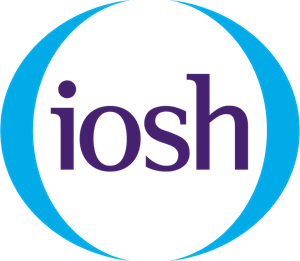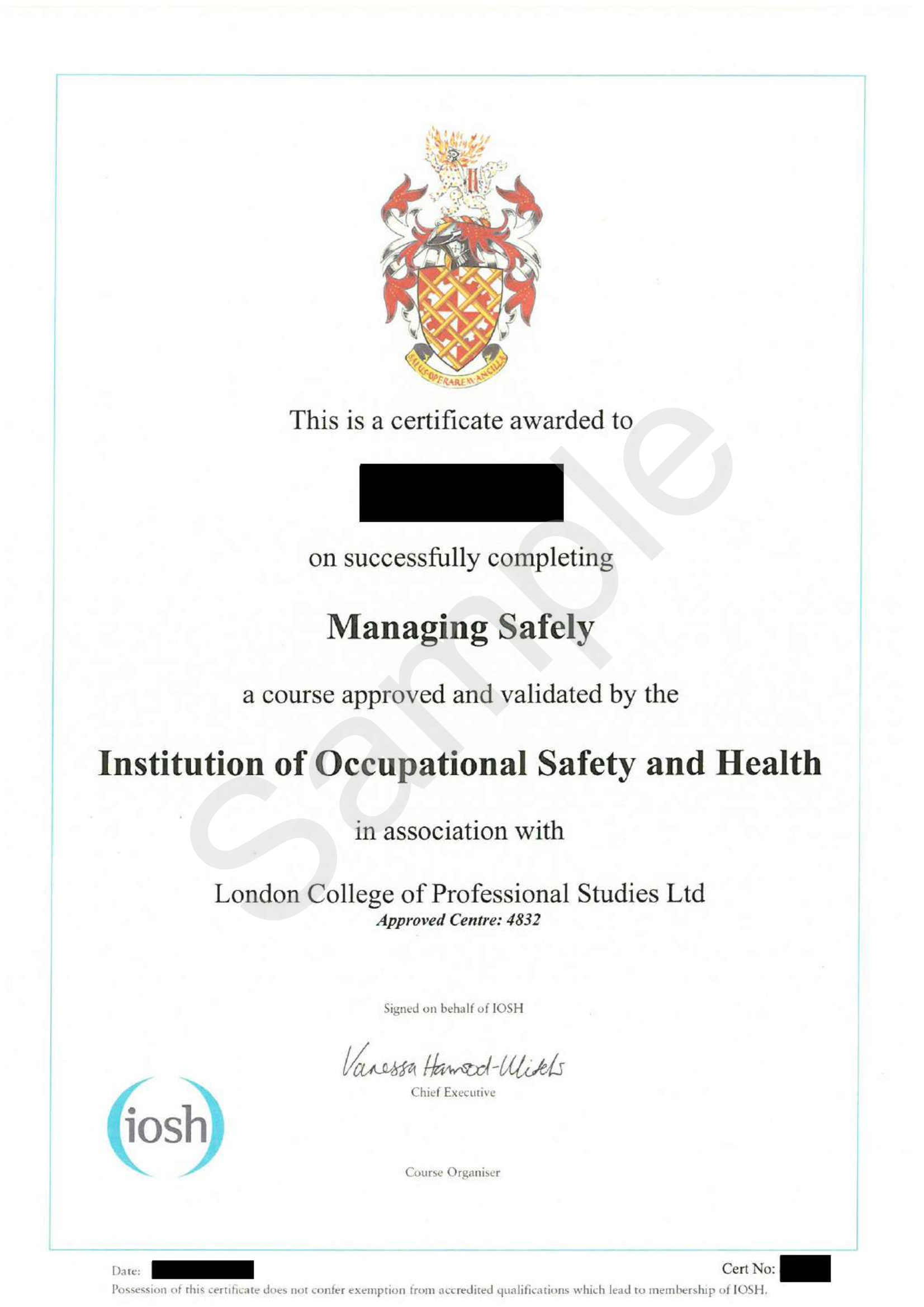Managing Safely
IOSH Managing Safely is for line managers (executives, managers, supervisors and anyone with responsibility for other people). The course gives you an introduction to health and safety so that you can apply your knowledge in the workplace with confidence.
This is the most effective method of training for the globally recognised IOSH qualification.
Overview
1. To give managers and supervisors an understanding of everyone’s safety and health responsibilities in the workplace.
2. To enable managers and supervisors to recognise how they can influence, control and monitor risk to improve safety and health issues in the workplace.
Duration
3-Days
Learning Aims & Outcome
By the end of this training course, you will be able to:
- Define the key terms relating to safety and health
- Describe the principles that underpin good safety and health performance
- Describe the key reasons to manage safety and health in the workplace
- Identify how the law can have an impact on safety and health in the workplace
- Describe how to assess, reduce and control risk in the workplace
- Identify workplace hazards and risks, their impact and how to manage them
- Identify how to evaluate and respond to an incident
- List the benefits and characteristics of an effective health and safety management system
Value of Course
Developed by Professionals
This course is IOSH Certified

Assesment
To complete this course, you must pass the IOSH Managing Safely Exam and Project. The cost of both the exam and project are already included in the cost of the course.
E-learning
- Designed to work around your schedule
- Complete the course in your own time
- Access learning materials from any device
How Is IOSH Working Safely Assessed?
IOSH Working Safely is assessed in 2 parts:
- Multiple-choice examination.
- A hazard spotting exercise.
An IOSH Working Safely certificate will be awarded upon successful completion of both parts of the assessment.
IOSH Managing Safely Course programme
Module 1 – Introducing managing safely
- The three key moral, legal and financial reasons for managing safely
- Manager responsibility and accountability for safety and health in the workplace
Module 2 – Assessing risks
- The definitions of the terms hazard, hazardous event and risk
- The definition of the term risk assessment
- The definitions of the terms likelihood and consequence
- The risk assessment process and risk rating system
- The benefits of carrying out risk assessment
Module 3 – Controlling the risks
- The definition of the term ‘reasonably practicable’’
- How to evaluate risk using a risk matrix and how to control those risks’
- How to reduce risk by applying the ‘hierarchy of risk control’’
- How implementing risk controls can impact the likelihood of an incident, consequence of an incident or both factors’
- The definition of the term ‘residual risk’
Module 4 – Understanding responsibilities
- What the law requires an organisation to do to protect the safety and health of workers and other persons under its control
- The definition of the term ‘reasonably foreseeable’
- The three knowledge tests to help determine ‘reasonably foreseeable’ risks: common, industry and expert knowledge
- The difference between criminal law and civil law in relation to safety and health
- The possible outcomes of not working within the law
- Where to find help and guidance for working within the law
- The key parts, and the elements of each part, of a health and safety management system
- The key benefits of introducing a health and safety management system
- Why leadership is an essential part of a health and safety management system
Module 5 – Understanding hazards
- The six main hazard categories and how hazards can fall into more than one group
- Common hazards in the workplace, their effects and symptoms and how to manage them including:
1. Access and egress
2. Aggression and violence
3. Asbestos
4. Bullying
5. Chemicals and harmful substances
6. Computer workstations
7. Confined spaces
8. Drugs and alcohol
9. Electricity
10. Fire
11. Heights
12. Housekeeping and welfare
13. Infection prevention and control
14. Lighting
15. Manual handling
16. Noise
17. Plant and machinery
18. Radiation
19. Slips and trips
20. Stress
21. Temperature
22. Vehicles and transport safety
23. Vibration
Module 6 – Investigating incidents
- The definitions of the terms incident, accident and near miss
- The reasons to investigate incidents
- The benefits of incident investigation
- The definitions of the terms immediate, underlying and root causes in relation to incidents
- The actions to be taken following an incident
- Incident reporting
- The stages of a structured approach to incident investigation
Module 7 – Measuring performance
- The three essential principles for good safety and health performance
- What types of information performance indicators can give to help improve safety and health in the workplace
- The characteristics of good key performance indicators
- The differences between proactive and reactive performance indicators
- What is meant by auditing
- The two types of auditing: internal and external
- Types of evidence used in an audit
Learning Outcomes
By the end of this course, learners will be able to:
- Describe the key reasons to manage safety and health in the workplace
- Define the key terms relating to safety and health
- Identify how the law can have an impact on safety and health in the workplace
- Describe how to assess, reduce and control risk in the workplace
- Identify workplace hazards and risks, their impact and how to manage them
- Identify how to evaluate and respond to an incident
- List the benefits and characteristics of an effective health and safety management system
- Describe the principles that underpin good safety and health performance

